A Detailed Guide on Ecommerce SEO
Online retailing has always been a challenge. Especially for those who have just entered the business.
The first thing that comes to online resellers' minds is advertising. You can create an ad and boost the number of sales up in a blink of an eye.
But it requires a solid budget for this kind of business growth. If you don't have money for the ads, you should explore other ways to stay afloat.
How to solve this issue?
SEO is your solution.
In this guide, you will get detailed information on how to optimize your eCommerce site.
Keep on reading!
What Are the First Steps to Take
SEO for an eCommerce site embraces all standard stages as non-eCommerce website optimization. And the first step you should take is to run keyword research.
Why do you need keyword research for your eCommerce site?
It will help you attract product-related customers that boost up the number of sales.
However, keyword research for an eCommerce site has its specifications. Let's review them:
-
You will have to list all the pages on the site
-
It requires finding and mapping appropriate keywords for each page
One more thing you should keep in mind. Any eCommerce website has two types of pages - category and product pages. And when it comes to keyword research for these pages, you will have to take a slightly different approach.
Now, let's skim through each step of keyword research for your eCommerce site.
-
List all the pages on your eCommerce site
To get the list of the eCommerce site's pages, you should use the following request "domain.com/sitemap/xml". Eventually, you will get this:
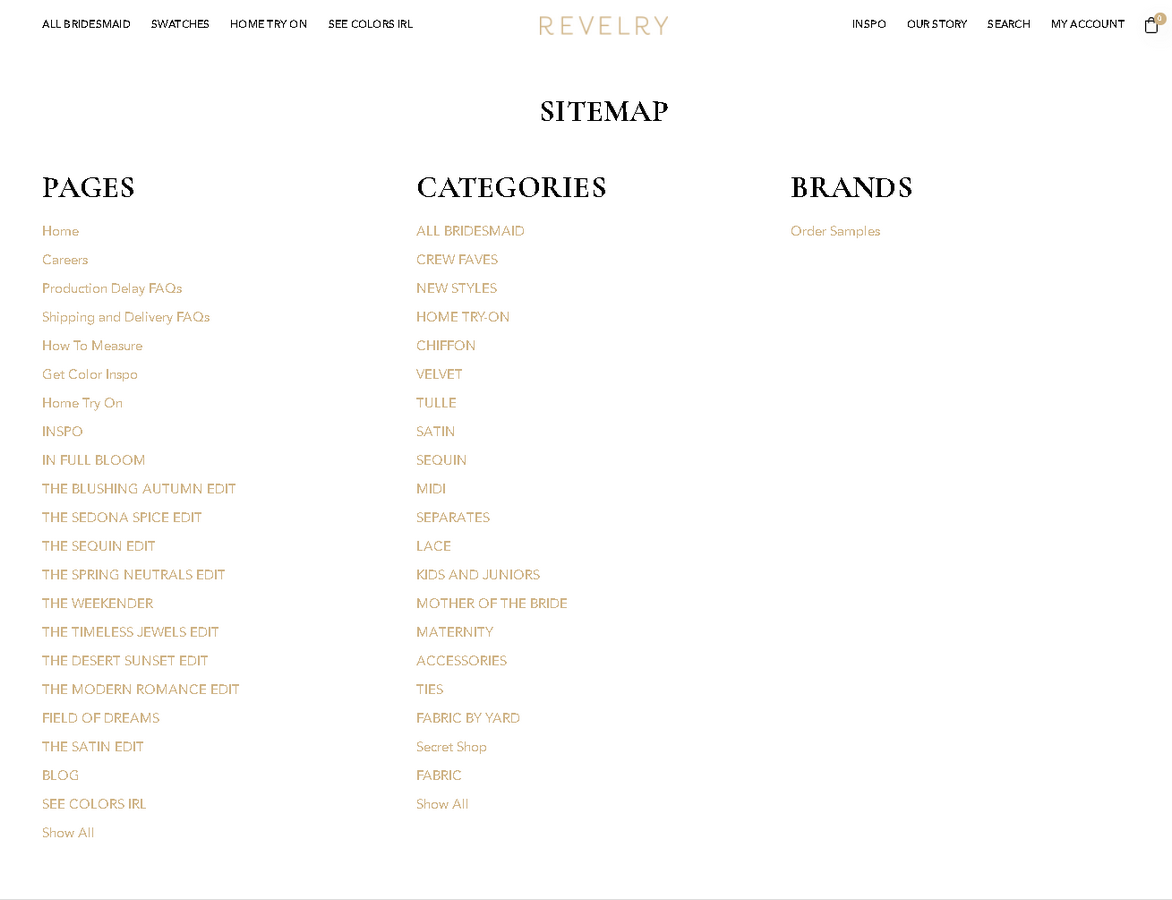
The next step is to use the Scraper plugin that will help you scrap the pages. Then, use the XPath:
//a[contains(text(),"{yourdomain.com}")]/@href
For those businesses who haven't launched their eCommerce site, you can use the above-suggested way to borrow structure, categories, and products from your competitors.
-
Make a prioritization of the pages
It is quite important to prioritize the pages of your eCommerce site.
Why?
Because it doesn't make sense to prioritize each page of the site if there are thousands of them.
Instead, you focus on optimizing those pages that drive sales. If you want to figure out these pages, Google Analytics will help you. Use this path to get the data you need:
Behaviour > Site Content > Landing Pages > sort by revenue (high to low)
If you are not aware of how to use Google Analytics, you can explore these pages with the help of the Site Explorer tool from Ahrefs. Pay attention to the "Top pages" report. It reveals pages that drive the most.
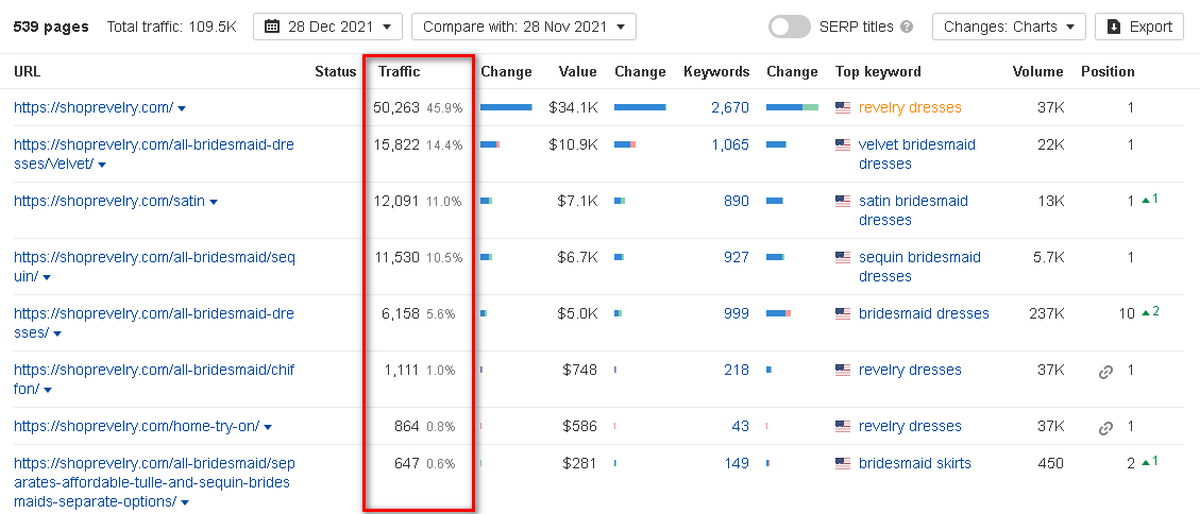
-
Keywords mapping
When you already have a list of priority pages, you can start keywords mapping.
First of all, identify "seed" keywords and long-tail variations to them. You can do this by analyzing your priority pages' URLs with the Site Explorer tool. The report you should draw your attention to is called "Organic keywords":
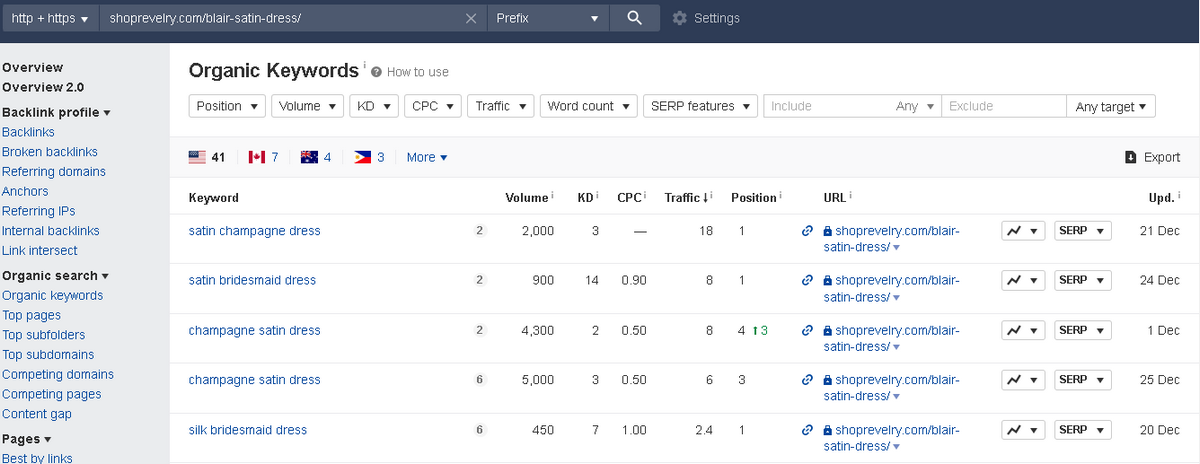
Next, you need to figure out what pages rank for these "seed" keywords. Click the "SERP" tab and review the results:
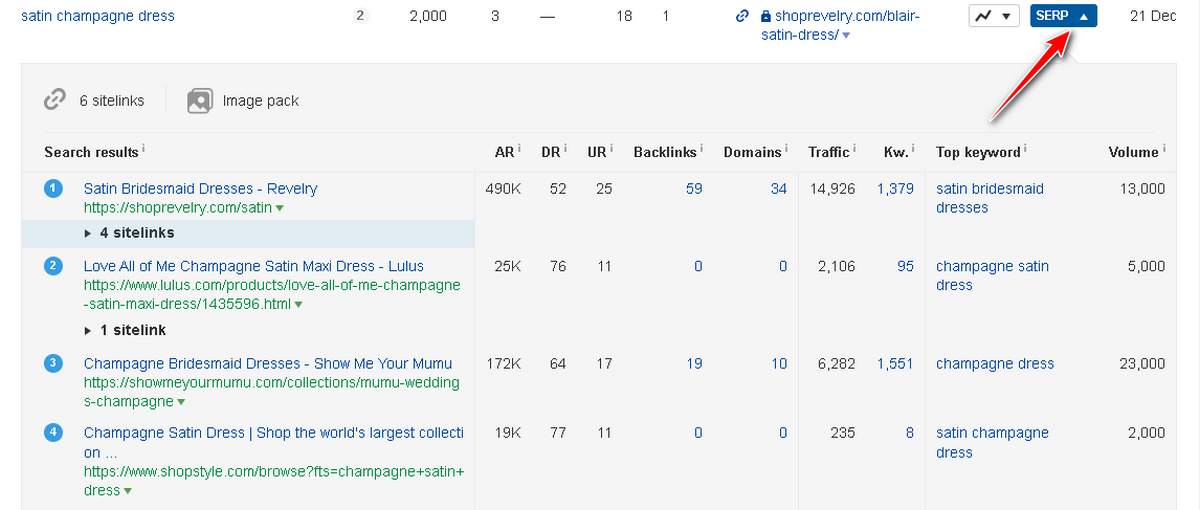
This report will help you understand how this keyword is mainly used - for product and category pages or blog posts. If you can see that the exact keyword makes sense, move on to the following stages of optimization.
-
Find long-tails
Long-tail keywords consist of 3 or more words in a single phrase. And if you already know your seed keywords, it won't be difficult to explore long-tails. You will need to use the Keywords Explorer tool with the "Related terms" report.
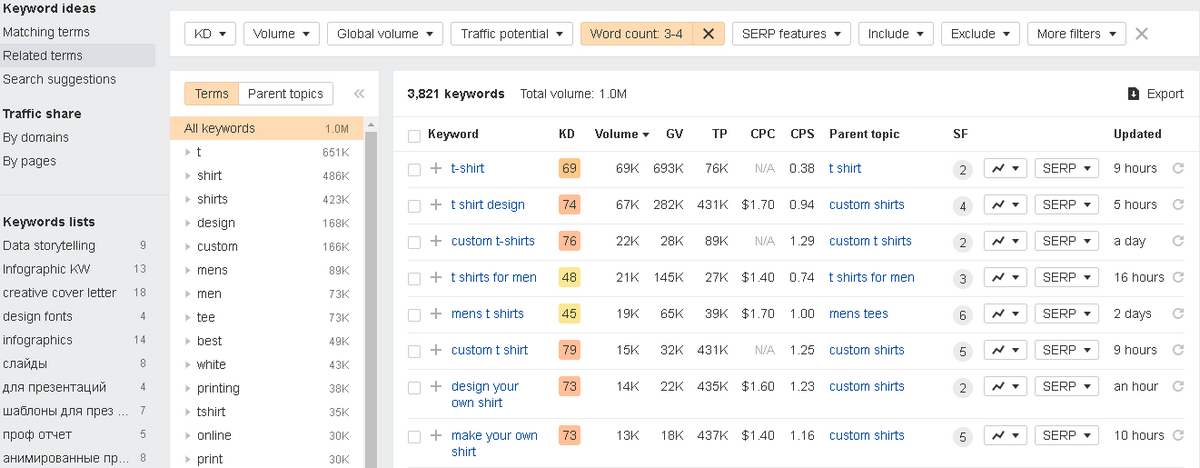
Don't forget to apply the "Word count" option requiring 3-4 words included.
Finally, get a list of long-tail keywords that you can use to optimize your eCommerce site.
Move to On-Page SEO Practices for Your Ecommerce Site
An eCommerce site should have an excellent design to attract potential customers. But there is a necessity to make your site visible in Google's eye.
How is it possible?
You can do this by implementing on-page SEO techniques.
What are on-page SEO elements?
On-page SEO elements are meta tags, meta descriptions, meta titles, and h2's.
Let's review how you should optimize your eCommerce site with on-page SEO.
-
Optimize meta titles, meta descriptions, and h2's
Go to Google and see a few examples of eCommerce sites. You will notice that these sites are optimized with a template approach.

If you look at these examples closer, you will see that they are not optimized properly. For instance, meta descriptions are truncated.
However, if your eCommerce site has hundreds of pages, it is quite hard to optimize each page.
How to solve the issue?
Figure out the most important pages and optimize them. Write individual titles and meta descriptions. Rest of the pages you can optimize using a "templated" approach. But don't use the same template for each page.
How to write a unique meta description?
First and foremost, any meta description should include a target keyword. Besides, enrich the descriptions with long-tails. Don't forget to apply action words - buy, click, etc. Mention USP (free shipping, free delivery). And optimize for CTR.
Keep in mind that h2's should be one per page.
-
URLs optimization
It is important to make sure all the URLs on your eCommerce website are readable. Here are suggested URL formats you should take into account:
-
domain.com/category-name (category page)
-
domain.com/category-name/subcategory-name (subcategory page)
-
domain.com/category-name/subcategory-name/subcategory-name (sub-sub category page)
-
domain.com/category-name/subcategory-name/subcategory-name/product (product page)
To optimize URLs perfectly, you should consider a few tips:
-
Avoid writing long URLs
-
Don't forget to include a target keyword
-
Create a clear hierarchy and context of the pages
-
Use hyphens to separate the words
-
Don't draw too much of your attention to URL parameters
-
Work on creating unique descriptions for product and category pages
A page description gives Google a clear understanding of what the page is about. Hence, when you create unique descriptions, it provides potential customers with information about the products they want to buy.
What are suggestions to follow?
-
Base the page's description on the target keyword
-
Use long-tails, LSI keywords, and synonyms
-
Write easy-to-read descriptions
-
Use description as the tool to communicate with the customers
Video content can be used to improve your search engine ranking. Create product demo videos to help consumers experience products before buying.
-
Apply schema markup
Have you ever noticed this type of search result in the SERP?

It has far more benefits compared to standard results you can see on search engines. Such a product page attracts lots of potential customers. It provides people with additional information about the product. What's more important, it positively impacts your branding.
How to compile a powerful schema markup?
Review six important attributes your schema markup should include:
-
name
-
image
-
description
-
aggregateRating
-
offers > priceCurrency
-
offers > price
Apply schema markup for your product pages and see your eCommerce business growth.
Off-Page SEO techniques
Off-page SEO is all about building backlinks to power up your site's backlink profile. For your information, Google considers backlinks as a ranking signal. Thus, the more backlinks your eCommerce site's pages have the more chances to see them ranking in the SERP.
Link building for your eCommerce website has the same approach as usual.
Start with analyzing your competitors' backlink profiles to figure out what backlinks they have. To help you with this use the tool called Link Intersect. The only thing you need to do is to grab a couple of your competitors' pages and analyze:
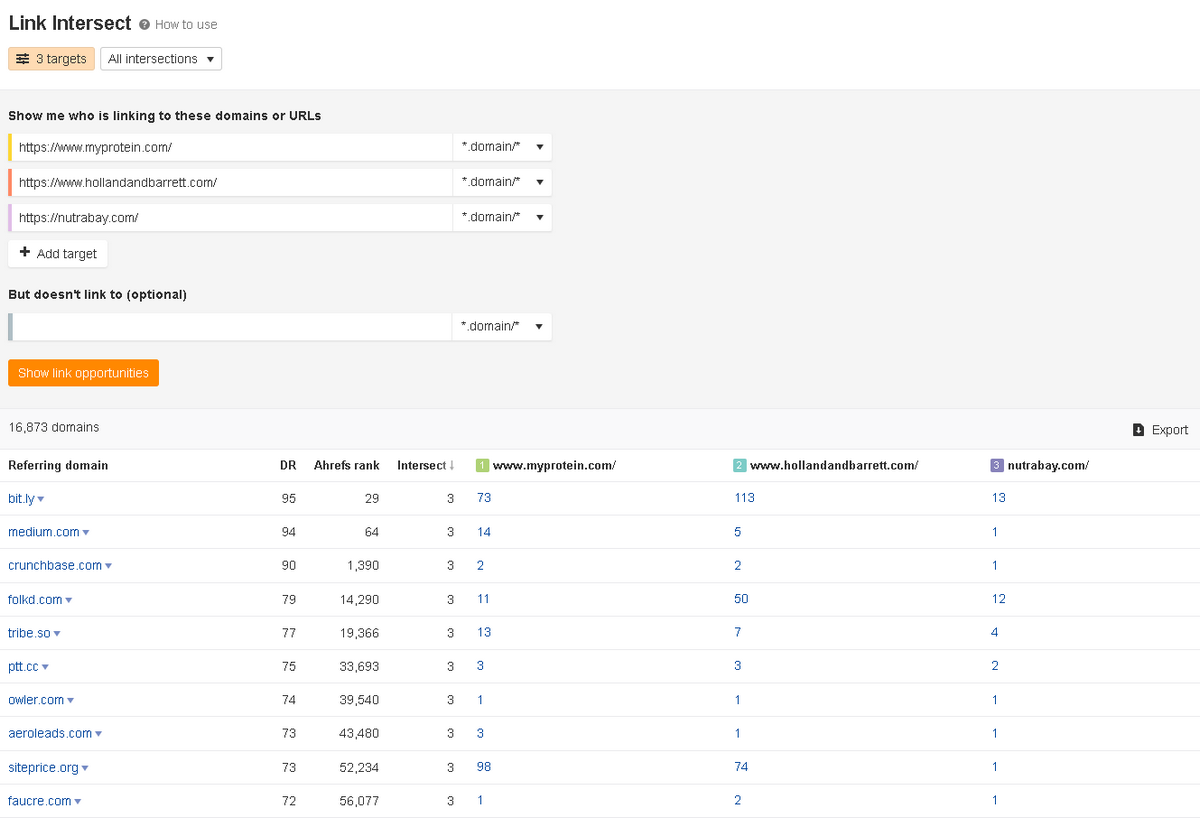
The tool suggests a list of the sites that link to your competitors. Review the report and acquire these backlinks for your eCommerce site.
To Sum Up
SEO is the only way for your eCommerce site to crush the competitors and get customers organically. It will allow you to save your budget and avoid using paid advertising.
However, you should remember that SEO requires some time to show positive results. Hence, be patient and wait.
This guide suggested basic SEO tips to use to optimize an eCommerce site. Nevertheless, you will gain results by applying these SEO tips for sure.
If you believe this guide lacks more pieces of advice regarding eCommerce SEO, don't hesitate to share your thoughts in the comments.
